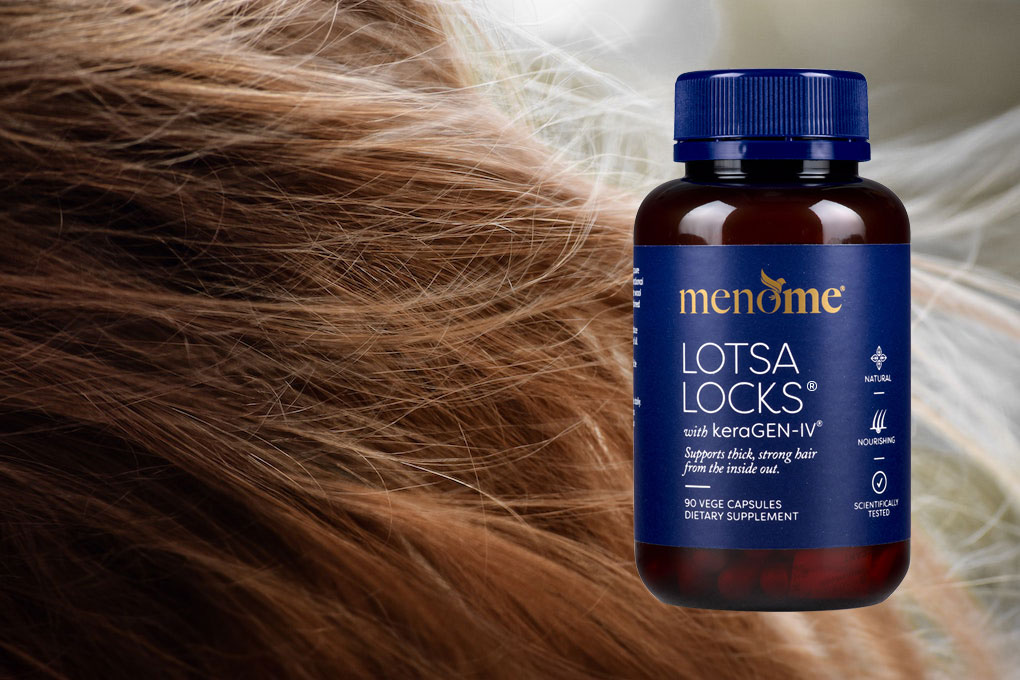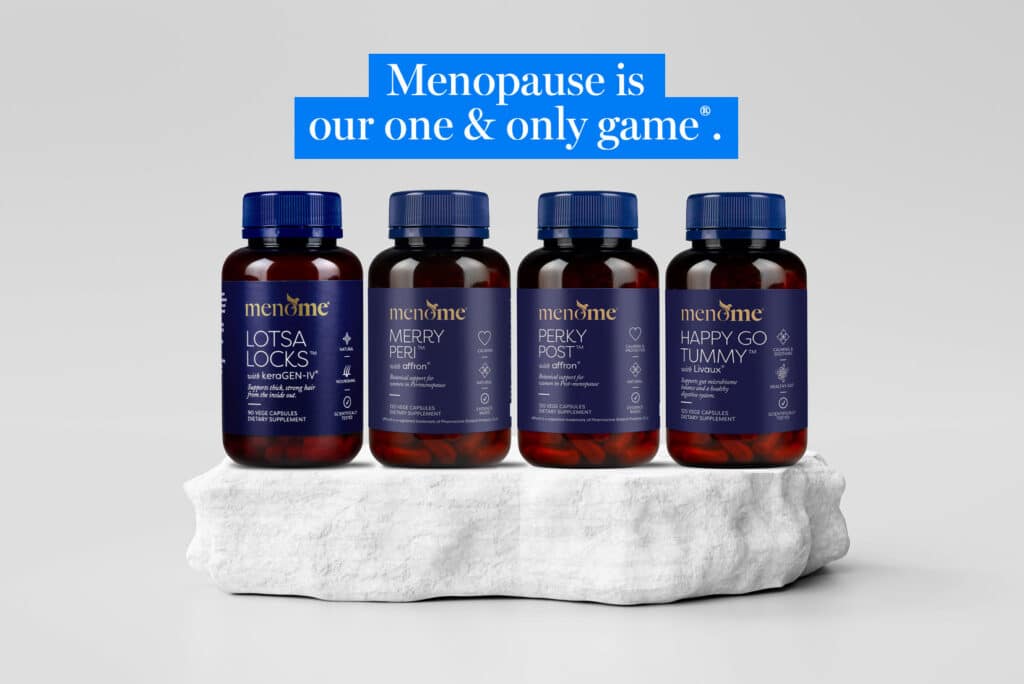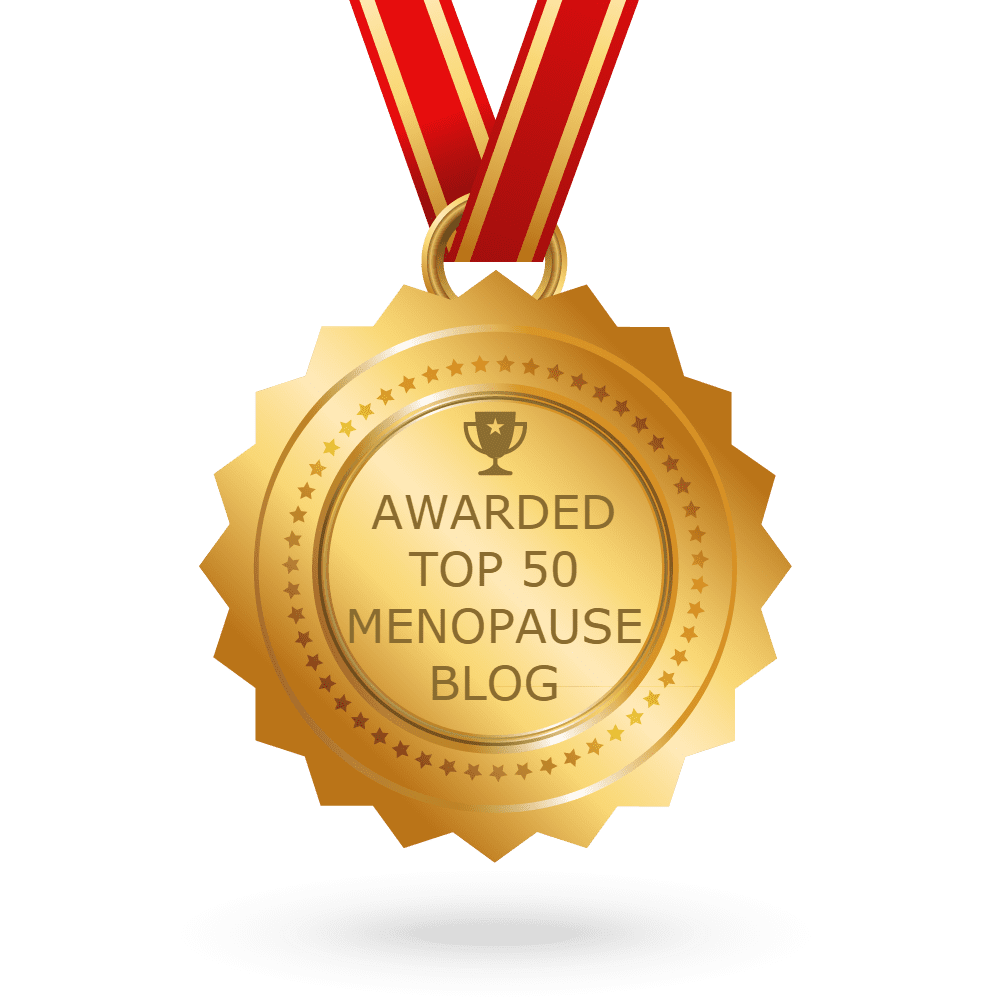Heeeeelllloooo, what do you think of the term second spring to describe menopause? Isn’t this Chinese term for menopause beautiful – your second spring? Well, we think so anyway.
Indeed, the Chinese look at our second spring differently. They view it as a time to work with nature to find the body’s natural balance through menopause. As do we.
And doesn’t second spring sound nicer than the word ‘menopause’? Or, ‘perimenopause’?
Think of menopause as a season
Generally, spring paints a picture of blossoming and growth. As a result, the leaves grow on trees again and flowers are more abundant. Similarly, several cultures view your second spring as a time when you move into a new stage of wisdom. Hallelujah!
Sure, perimenopause can come with challenges. The transition doesn’t run smoothly for 85 percent1 of us. In fact, it can come with a host of signs including mood swings, anxiety, depression, UTIs, itchy skin and sleep disruption.
By the same token, post-menopause comes with its own set of nuances including more health vulnerabilities such as heart disease, dementia and osteoporosis. However, according to a 2016 study published in Maturitas2 many women in post-menopause report feeling happier.
So, shifting your mindset about menopause is key. It’s a time to step up your wellness focus, self-care and self-compassion. Think of it as a new season in your life.
Read: Women Report Feeling Less Stress As They Age
7 Smart Ways To Enjoy Your Second Spring 🌱
1. Take the time to ‘pause’
Sometimes, in the busyness of life, we forget to pause.
Take a moment to just be:
- Breathe in for 4
- Hold for 7
- Breathe out for 8
Rinse and repeat.
You should feel more relaxed as your parasympathetic nervous system3 is activated.
Now, pause a moment. How do you feel? Assess your perimenopausal or post-menopausal (second spring) signs and symptoms, your weight, your mental health, and your wellness.
Now consider where you’d like them to be. This is where the concept of journaling can be helpful.
Use a journal and pen to write your thoughts and feelings onto the pages. In coaching-land, we call this a mind dump.
There is power in manually writing things down4.
It’s especially good if you’re experiencing the racing mind, self-blame and second-guessing rollercoaster of perimenopause. The brain stuff is real and when it hits it can have you spinning!
Journaling frees up your mind and lets you do a brain dump – in fact, it’s therapeutic because can help you think more clearly.

2. Make a second spring plan
Using that fab analogy of spring, you’ve taken a look at the health of your soil. And now it’s time to think about how best to fertilise it for new growth. (Or your second spring.)

What did you discover when you were ‘pausing’? Do you have several signs and symptoms? Are you happy with your weight? And what about your mental health?
It’s smart to list the things you’d like to work on so you know where to put your focus. The fundamentals are usually diet, movement and conquering stress.
It can be a minefield out there and many of you feel overwhelmed so look for trusted resources and learn as much as you can. Our Learn section is phenomenally helpful. Moreover, our book, Menopause Decoded: Because Hormones Need Translators is a super-good tool.
If you feel you need some help, consider hiring a health & menopause coach like me to be your wing-woman. I’d love to help. Check me out here.
3. Perform a spring clean
Ha, don’t we love this one?! But don’t worry, we’re not talking about your home but rather taking control of potential hormonal chaos by spring cleaning.
You see, some of the little-known hormone-disrupting factors of life in the 21st century are xenoestrogens or endocrine disruptors5.
Xenoestrogens can have an estrogen-like effect detrimentally mimicking our natural hormones.
They can create an excess of estrogens (dirty estrogens) in the body leading to estrogen dominance. Furthermore, their build-up has been linked with cancers, obesity and diabetes and endometriosis. Not to mention magnified perimenopause / menopause signs and symptoms.
You’ll find them in everyday items like medications, food preservatives, plastics, personal care and cleaning, gardening and office products.
Part of the liver’s role is to act as your body’s natural wastemaster. But if it’s loaded down with liver loaders such as xenoestrogens, endocrine disrupting chemicals, saturated fats, unprocessed carbs, caffeine and alcohol it can’t do its job. And while it’s loaded down it may accumulates fat cells which can turn your liver fatty or the excess estrogen it can’t process can be stored as fat around the tummy. None of us want that, what’s more, the liver shrinks in size as we grow older so it’s not as powerful. So your midlife liver needs lots of love; one reason we often talk about loving the liver through diet.
In addition, weeding out the chemical-laden items in both your pantry and bathroom will also make it easier on the liver and let it get back to detoxifying.

Listen: Exploring The Impact Of Xenoestrogens & EDC’s
Download: The EWG’s Guide To Endocrine Disruptors
4. Freshen up your food
If ever there was a time for a diet punching its weight with nutrients your second spring is it. In fact, nutrients via wholesome food are absolutely essential during perimenopause and post-menopause. Just sayin’.
Drink pure, filtered water
A primary dietary need is good old H20, as pure and clean as possible. You might be surprised to learn that not drinking enough water can lead to brain fog, fatigue, poop problems, headaches, irritability etc. Similar to the symptoms of peri/menopause!
Here’s a handy water calculator for you and click here for a free Water Tracker to download.
Nurture your nutrients
What’s more, your need for nutrients goes sky high. If you’ve ever been pregnant, think back to how careful you were about what you ate. Employ the same ethos. Things have changed and what worked for you in your 20s won’t work for you in your 40s, 50s and 60s. You require ‘more, more, more’ goodness and ‘less, less, less’ processed foods. We have a focus on the Mediterranean style diet which science shows is the best choice for your second spring.
As well as that refer to our PPFF guidelines and fill your diet with phytoestrogens, protein, fibre and (healthy) fat.

PPFF
Phytoestrogens
Phytoestrogens are plant chemicals that can mimic your body’s estrogen (in a good way). Emphasise fresh produce in your diet.
Protein
Add in lean proteins such as chickpeas, lentils, beans (including sprouted) and soy products such as tofu and tempeh. These are also high in phytoestrogens.
Some women can’t tolerate soy, but if you can, studies have shown consuming soy foods can mitigate hot flushes6.
If you’re prone to night sweats, go easy on protein at the end of the day and choose plant protein over animal protein. Protein is thermogenic which means it’s ‘warming;.
Fibre
Eat the rainbow and include a wide variety of fibre-rich and nutrient-dense fruit and vegetables. About 30 different types a week – I kid you not! Additionally, chia seeds, beans, lentils and whole grains like brown rice and oats are also chock full of fibre. This ensures the body’s elimination processes are in top form.
(Healthy) Fat
Embrace healthy fats such as avocado, extra virgin olive oil (EVOO), nuts, seeds and oily fish. Fats are essential for a healthy weight and satiety. Furthermore, they’re key to making hormones, optimal brain function and nutrient absorption. In fact, EVOO is your BFF on this ride.
Read: 5 Ways Your Diet Should Change As You Enter Perimenopause
Download: your FREE phytoestrogen foods sheet.
5. Turn on the sprinkler system
Now that you’ve prepped, planted, weeded and fertilised your flourishing garden it’s time to sprinkle on some tender loving care.
So, how’s your skin doing? And what about your hair?
Just as menopause and growing older change things internally (all of your organs are ageing) so too do things look different externally. Especially as you come into your second spring.
Second spring skin

Changes in estrogen levels can make your skin drier and less elastic. What’s more, estrogen’s role is to help with the production of collagen and elastin. As such, it controls skin thickness, moisture content and blood flow to the skin.
Collagen is a skin-plumping protein, while elastin contributes to your skin’s elasticity. Subsequently, declining estrogen leads to less collagen and elastin. Moreover, the menopausal years see a reduction in the skin’s natural moisturising factors (NMF) such as hyaluronic acid.
Second spring hair
In a similar fashion, menopause can be behind hair loss and thinning. Hormonal changes cause shifts in the hair’s natural growth cycle. Additionally, estrogen helps hair grow and stay on the head for longer while more androgens are being produced which can cause hair follicles to shrink. Together this contributes to hair loss and hair thinning.
But don’t worry, we’ve got magic in a bottle to help (see below).
Some other smart helpers include:
- Ensure you’re eating good fats which hair and skin love.
- In addition, they respond to oodles of fresh produce.
- Applying a regular hair treatment and facial mask is wonderfully nourishing.
- Look for hydrating skincare (gold standard hydrators include hyaluronic acid and glycerin).

Here she is, our magic in a bottle: LotsaLocks®? If you’re losing hair, or you can feel it thinning LotsaLocks® works at a follicular level to increase hair density. Bonus? It also gives your skin and nails a boost too so go get glowing. Click here to buy.
6. Maintain your garden
OK, so your garden’s flourishing and it’s important to keep the soil and growth moving with regular maintenance. In much the same way, your body requires movement during your second spring.
The truth is, our muscle mass and bone strength begin to decline in perimenopause. And this speeds up for the first few years post-menopause.
Indeed, loss of muscle mass (sarcopenia) and weakening bone (osteoporosis) is something to take stock of post-menopause.
For this reason, both strength training and cardiovascular exercise are vital for your strength, flexibility and weight management. And also your mental health and brain power as exercise releases endorphins which are neurochemicals that trigger a feeling of wellbeing.
Read: 7 Reasons Strength Training Is Vital For Women In Midlife

7. Arrange a beautiful bouquet (gathering)

This isn’t so much about getting out there and partying (though if you want to – enjoy!) But one of the characteristics of some women during peri/menopause is an avoidance of social gatherings. Not to mention loss of confidence.
However, a sense of community and support systems is super important during your second spring. And that’s not gobbledy gook, it’s backed by science. The experience of menopause is a time of (sometimes abrupt) change so you need support and nurturing more than ever.
This is probably the reason behind the continual rise of private Facebook groups where you’ll find like-minded groups experiencing similar things.
Please do join 40+ Ageless Goddesses our private Facebook group here.
Read: Why Community Is Important For Health & Happiness During Menopause
Conclusion
Water your seedlings

Now that you’ve planted and nurtured your seedlings it’s time to support them as they grow to their new stage. A bit like your second spring.
Mother Nature provides the tools and regular implementation will see you flourish.
So why not continue with your ‘pausing’, planning and journaling? Keep avoiding those xenoestrogens and fill your body up with an abundance of nutrition and hydration.
Together, they’ll help you reach the holy grail of a vital and vibrant second spring.
We hope you enjoyed this springtime tale. 🙂
References
- National Library of Medicine, Menopausal Symptoms: Comparative Effectiveness of Therapies, Grant MD, Marbella A, Wang AT, et al.
- Maturitas, The trajectory of negative mood and depressive symptoms over two decades, Katherine E Campbell, Lorraine Dennerstein, Mark Tracey, Cassandra E Szoeke, October 24, 2016.
- National Library of Medicine, Neuroanatomy, Parasympathetic Nervous System, Jacob Tindle; Prasanna Tadi
- University of Rochester Medical Center, Journaling for Mental Health, L Renee Watson MSN RN; Marianne Fraser MSN RN; Paul Ballas MD
- Science Direct, Xenoestrogens Volume 2, Environmental Toxins, Bethany Montgomery Hays MD; Tori Hudson ND, in Textbook of Natural Medicine (Fifth Edition), 2020
- National Library of Medicine, Nagata et al, 2001








